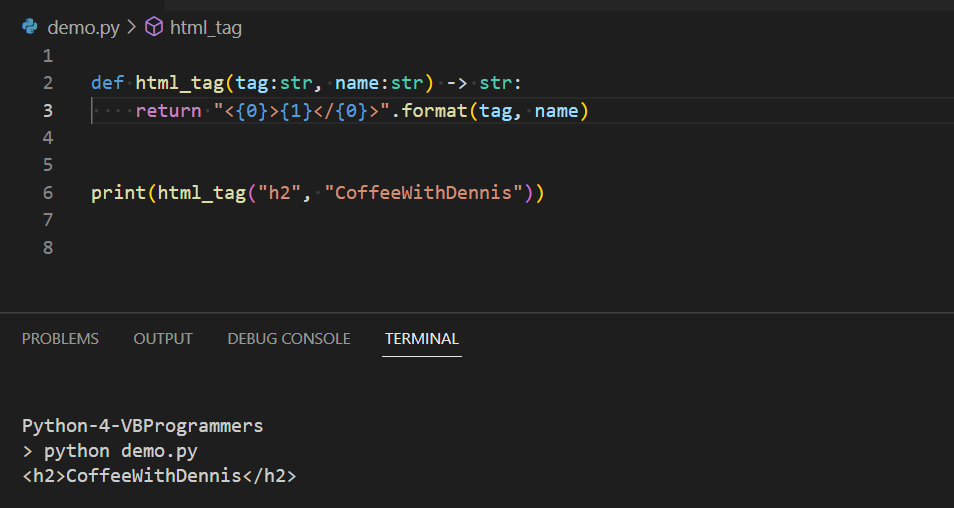In this blog, I’ll show you how you can help VB programmers to transition to (or understand) Python.
Function
To get a VB programmer to “map” concept and keywords in Python, here’s a simple guide that you can use:
defis tofunctionvarname:vartypeis tovarname as vartype-> vartypeis toas vartype
And here’s a simple example to illustrate that mapping I just gave:
Python implementation

VB.Net implementation

Knowing this mapping makes it simple, right? They’re practically the same, just some minor implementing differences.
Class
Now, let’s go to a more complex comparison — class.
Python and VB(Net) share common concepts like:
- class (level) variables (data/attributes) [and/or methods]
- in VB, this is implemented using the “shared” keyword
- instance (level) variables [and/or methods]
- the “self” in Python is implemented as “Me” in VB
- local (level) variables
- in both languages, they are not associated with either class or instance and exists within the block/function
Class-level data and/or methods are accessible even without an instance of that class. There are specific reasons for doing this so be sure you don’t abuse it — know when and why.
Python implementation
Here’s a demo of a Python class and how it implements the 3 levels of access:

VB.Net implementation
And here’s the similar (conceptually), albeit longer implementation using VB.Net

Congratulations!
If you understand this, then you should be able to transition easily from VB to Python.
Share this to others that might be struggling to bridge the gap between VB and Python.
Source Codes
If you want to try them out, I uploaded the codes to my Git account:
https://github.com/vegitz/codes/tree/master/0047%20Python%20for%20VB%20programmers
